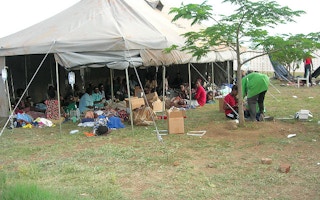Heavy rainfall linked to the El Nino weather pattern can push up cholera cases in Africa, according to a study published on Monday that could help health workers prepare for outbreaks.
El Nino is a warming of ocean surface temperatures in the eastern and central Pacific that occurs every few years, with global consequences. In Africa it often brings excessive rains to the east while the southern cone gets parched.
By mapping and comparing cholera outbreaks in Africa with previous occurences of El Nino, researchers at Johns Hopkins University (JHU) saw a clear link between rainfall caused by the weather pattern and the number of cholera cases.
“
Knowing there is elevated cholera risk in a particular region can help reduce the number of deaths that result.
Justin Lessler, lead researcher and epidemiologist, Johns Hopkins University
For example when El Nino occurred between 2000 and 2014, which increased rainfall in east Africa, cholera cases tripled in the region, according to findings published in the Proceedings of the National Academy of Sciences.
Researchers said the findings could help health workers anticipate and prepare for potential cholera outbreaks, since scientists are able to track when El Nino will occur six months to a year in advance.
“Knowing there is elevated cholera risk in a particular region can help reduce the number of deaths that result,” said Justin Lessler, lead researcher and epidemiologist at JHU.
An intestinal infection often linked to contaminated drinking water, cholera causes diarrhoea and vomiting, leaving small children especially vulnerable to death from dehydration.
Africa has the most cholera cases in the world with more than 900 recorded deaths in 2015, the World Health Organization (WHO) says.
The researchers said higher rainfall overruns sewerage systems in areas with poor infrastructure, which contaminates the drinking water and could lead to cholera.
But in drought-hit regions, some people contract cholera after drinking contaminated water since there are no other water sources, the researchers said.
“Linking these outbreaks to El Nino events and increased rainfall improves our understanding of the environmental conditions that promote cholera transmission in the region and will help predict future outbreaks,” said study author and epidemiologist Sean Moore.
Each year, there are between one to four million cholera cases recorded globally and at least 21,000 die from the preventable disease, the WHO says.
This story was published with permission from Thomson Reuters Foundation, the charitable arm of Thomson Reuters that covers humanitarian issues, conflicts, global land and property rights, modern slavery and human trafficking, women’s rights, climate change and resilience. Visit http://news.trust.org to see more stories.

















